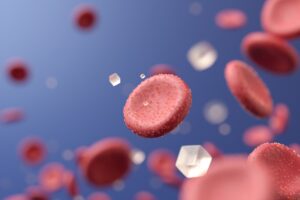Matcha isn’t just a trend anymore, it’s a lifestyle. From vibrant green lattes to ice creams, cookies, and even pastries, matcha has become a global sensation. Demand has grown so much that earlier this year in Japan, the world’s leading producer and exporter of matcha faced a temporary shortage.
Often praised for its earthy umami flavour and beautiful colour, matcha is widely considered a ‘superfood’. But is it really as healthy as it seems, or are there hidden risks you should know about?

What Makes Matcha Unique?
Matcha is a finely ground powder made from Camellia sinensis, the same plant used for green tea. What makes it different is its cultivation process. Before harvest, tea plants are shaded for about three weeks. This boosts chlorophyll and L-theanine, giving matcha its rich green colour and signature umami taste.
After harvesting, stems and veins are removed, and the leaves are stone-ground into a fine powder. Unlike regular tea, you’re consuming the whole leaf, so the health benefits (and caffeine content) are more concentrated.
How Much Caffeine is in Matcha?
Matcha contains more caffeine than regular green tea. On average:
- 1 gram of matcha = 19 to 44 mg caffeine
- A typical serving (2 to 4 grams) = 75 to 177 mg caffeine
For comparison, that’s similar to a cup of coffee.
The final caffeine content depends on the grade of matcha and how it’s brewed. For the best balance, prepare matcha with water between 75 to 85°C. This helps extract antioxidants and L-theanine without making it too bitter.
The Proven Health Benefits of Matcha
Matcha has earned its spot in wellness routines for good reason. Research suggests it may offer:
- Powerful antioxidants – High catechin levels fight free radicals and may lower chronic disease risk.
- Brain-boosting effects – Caffeine + L-theanine improve focus, memory, and reaction time without the jitters.
- Heart health support – Regular intake may lower cholesterol and improve circulation.
- Natural detox – Its high chlorophyll content may support the body’s detox processes.
- Weight management – Green tea catechins can help increase fat oxidation and metabolism.
The Hidden Risks of Matcha
Despite the benefits, there are some things to watch out for:
- Medication interactions – Matcha may interfere with blood thinners, blood pressure drugs, antidepressants, or diabetes medications.
- Health conditions – People with heart problems, anemia, or anxiety should moderate their intake.
- Fake ‘matcha’ products – Many desserts and drinks use artificial matcha flavour mixed with sugar, creamers, and additives. These eliminate most of the health benefits.

How Much Matcha is Safe to Drink?
According to the FDA, the safe caffeine limit is 400 mg per day. This means you can enjoy 2 to 3 cups of matcha daily, depending on your other caffeine sources.
Smart tips for mindful matcha drinking:
- Choose authentic matcha powder (preferably from Japan).
- Balance your caffeine intake if you also drink coffee or tea.
- Avoid matcha late in the evening to prevent sleep disruption.
- If you take medication or have underlying conditions, check with your doctor.
Matcha can be a nutrient-packed, antioxidant-rich drink, but only if consumed mindfully. The key is choosing real matcha, moderating your intake, and making sure it fits your health needs.
So next time you sip that frothy green latte, you can enjoy it knowing exactly what’s in your cup and how to make matcha truly work for your health.
Join our 1Twenty80 Broadcast Channel today! Be the first to receive interview updates, behind-the-scenes snippets and happenings in Malaysia’s health scene!













